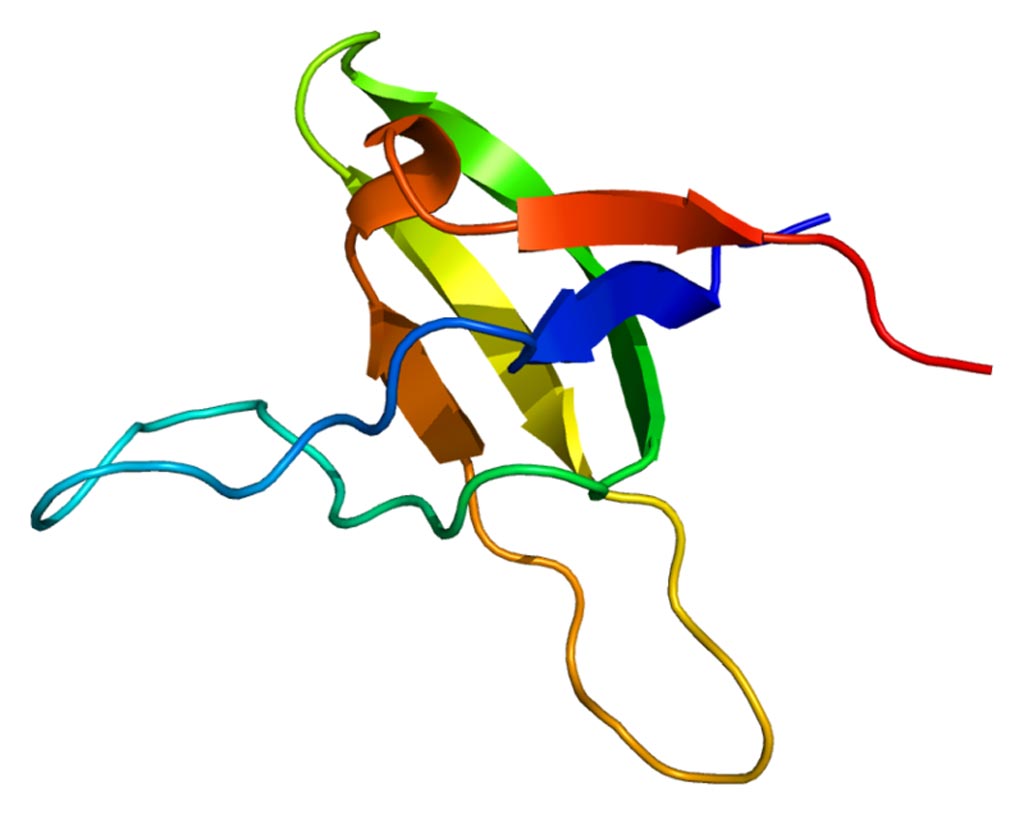Gene Mutation Leads to Hypertrophic Cardiomyopathy
By LabMedica International staff writers
Posted on 21 Jun 2017
A team of heart disease researchers explained how a mutation in the gene coding for the obscurin family of proteins leads to the development of an enlarged heart, a condition known as hypertrophic cardiomyopathy.Posted on 21 Jun 2017
Obscurins are cytoskeletal proteins with structural and regulatory roles encoded by the OBSCN gene. Mutations in OBSCN are associated with the development of hypertrophic cardiomyopathy (HCM) and dilated cardiomyopathy (DCM). Specifically, the R4344Q mutation present in immunoglobulin domain 58 (Ig58) of the obscurin protein was the first to be linked with the development of HCM.

Image: The structure of the obscurin protein encoded by the OBSCN gene (Photo courtesy of Wikimedia Commons).
In the current study, investigators at the University of Maryland School of Medicine (Baltimore, USA) used a genetically engineered mouse model to assess the effects of the R4344Q mutation in vivo. In the mouse model, mutant obscurins were expressed and incorporated normally into sarcomeres.
A sarcomere is the basic unit of striated muscle tissue. Sarcomeres are composed of long, fibrous proteins as filaments that slide past each other when a muscle contracts or relaxes. Two of the important proteins are myosin, which forms the thick filament, and actin, which forms the thin filament. Myosin has a long, fibrous tail and a globular head, which binds to actin.
In this study, the genetically engineered mice were maintained in three groups: one group experienced no stress, one group experienced moderate stress, and one group experienced significant stress. Results published in the June 7, 2017, online edition of the journal Science Advances revealed that in the mice maintained with little or no stress, the R4344Q mutation resulted in Ca2+ deregulation and spontaneous arrhythmia, whereas in the presence of chronic, pathological stress, it led to cardiac remodeling and dilation that produced hearts that were scarred and ineffective.
At the molecular level, structural analysis revealed that the R4344Q mutation altered the distribution of electrostatic charges over the Ig58 surface of the obscurin protein, thus interfering with its binding capabilities.
"This study gives us new information about the involvement of obscurins in the mechanics of heart disease," said senior author Dr. Aikaterini Kontrogianni-Konstantopoulos, professor of biochemistry and molecular biology at the University of Maryland School of Medicine. "It suggests that people carrying a mutated version of OBSCN may develop heart disease. This work could eventually lead to targeted therapies for people who have OBSCN mutations."
Related Links:
University of Maryland School of Medicine














